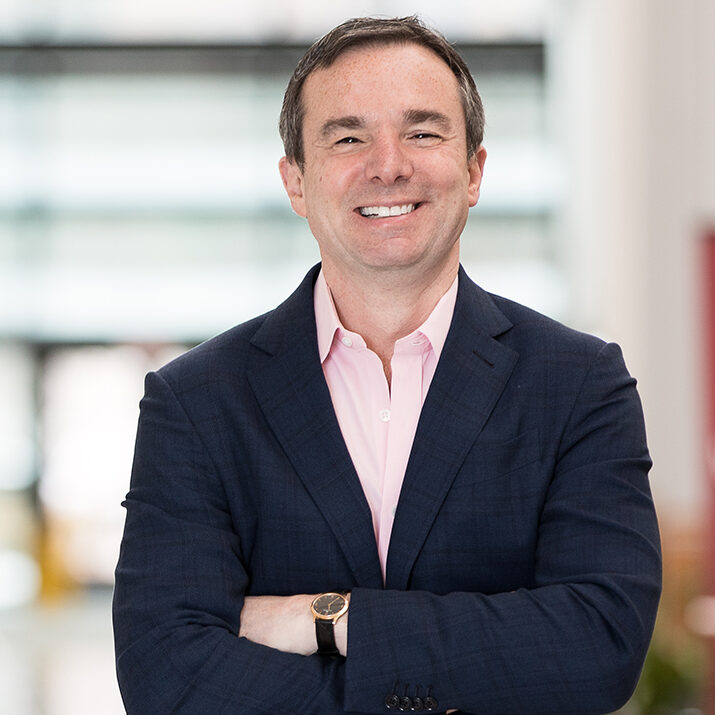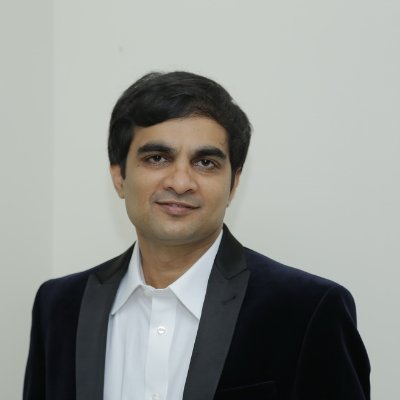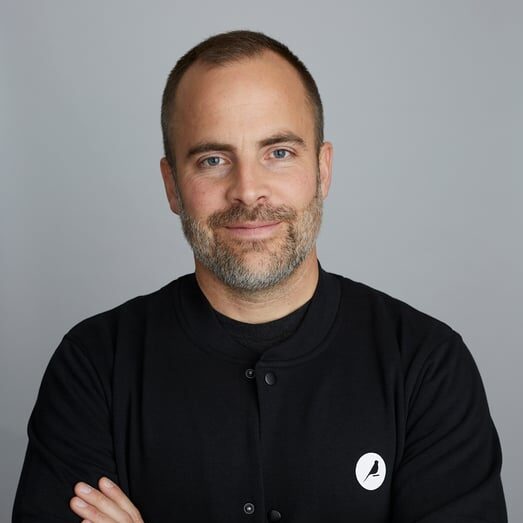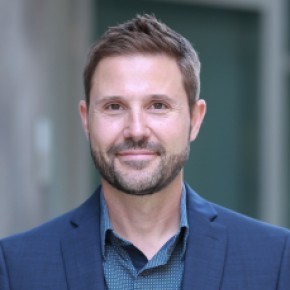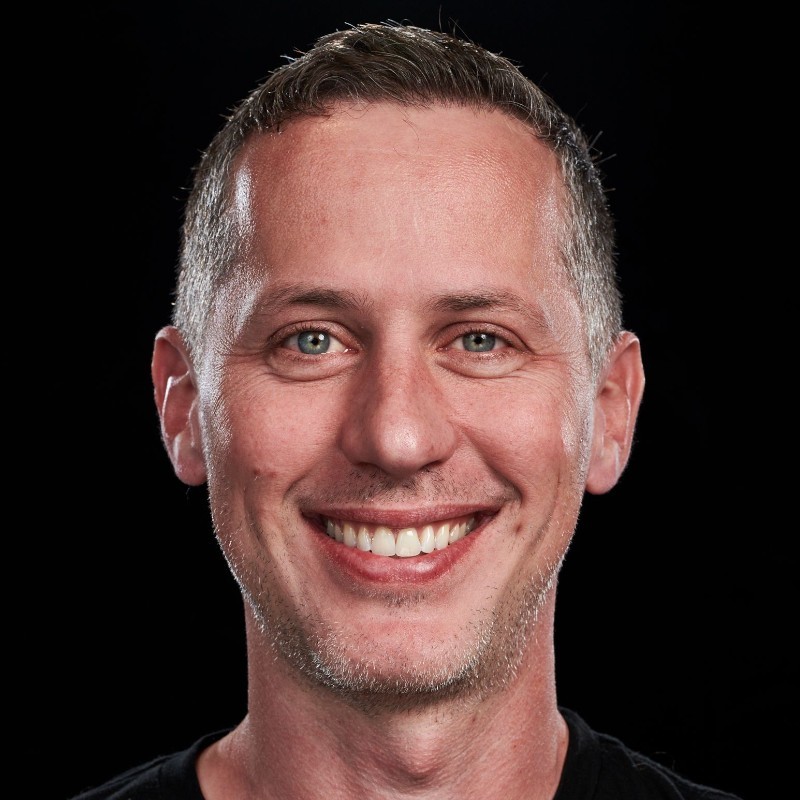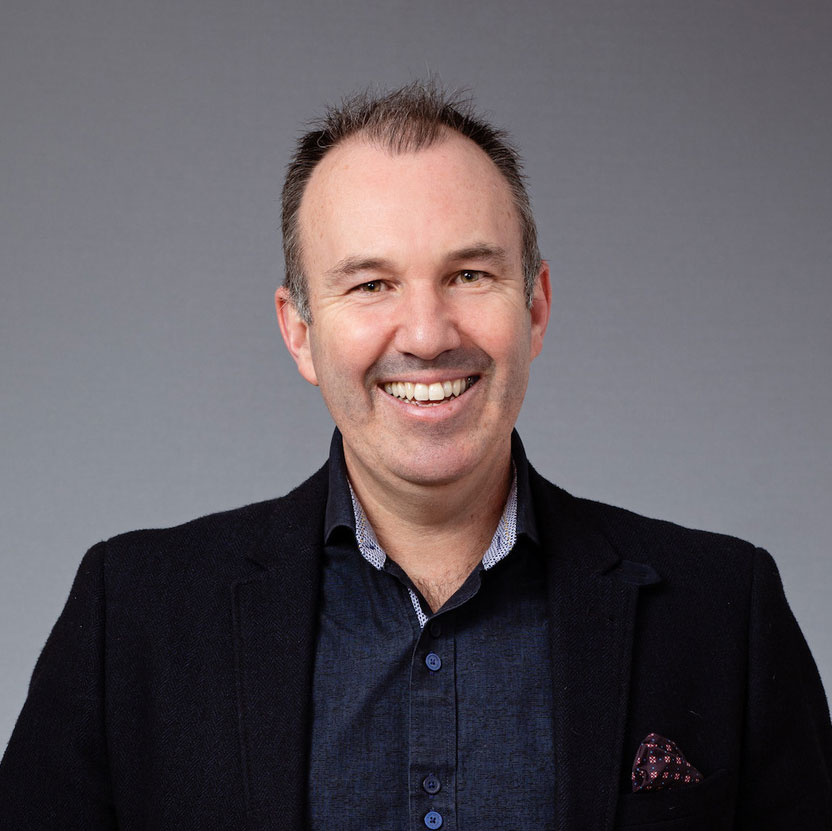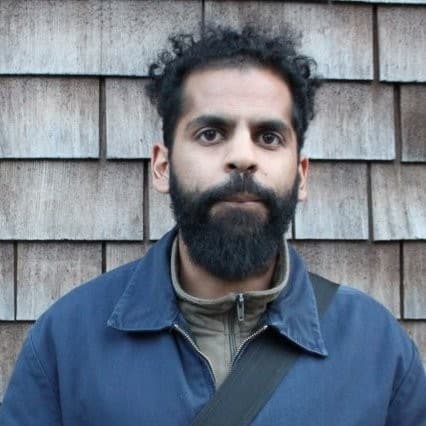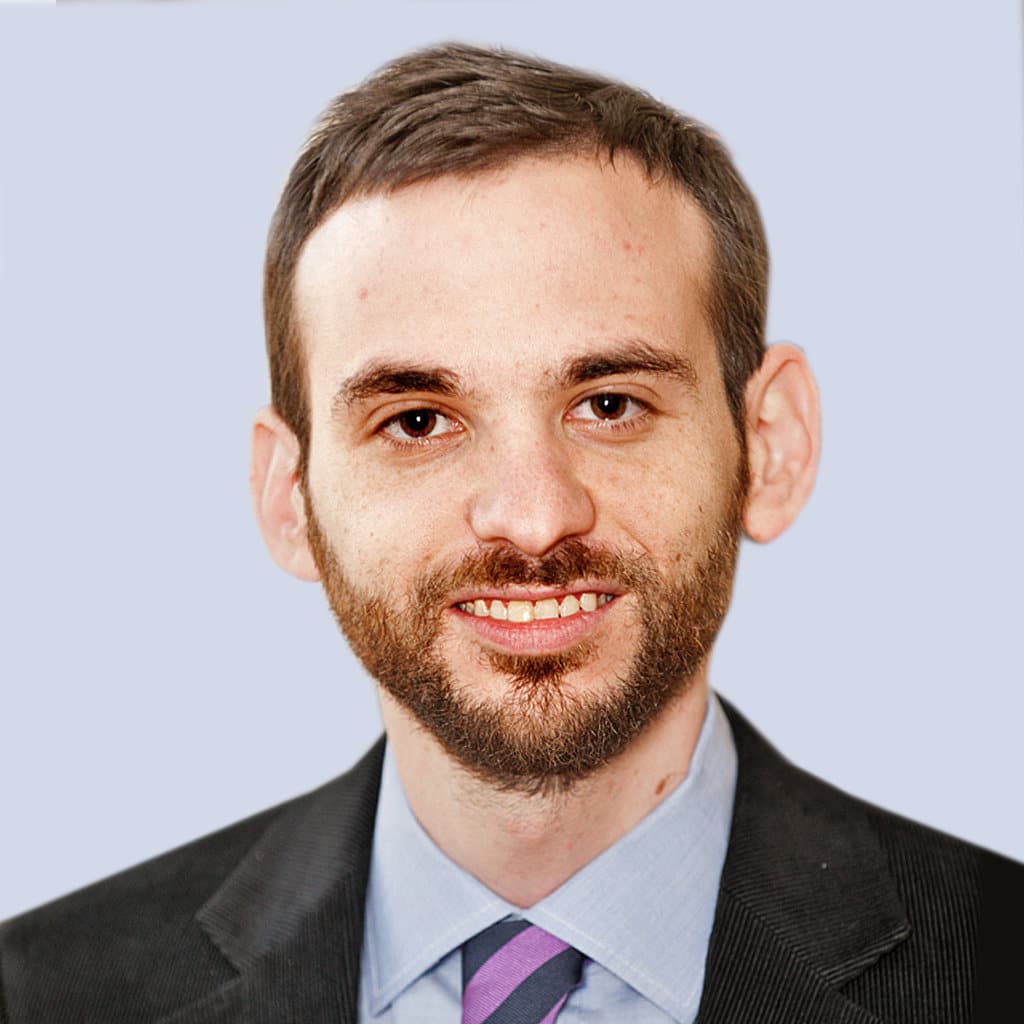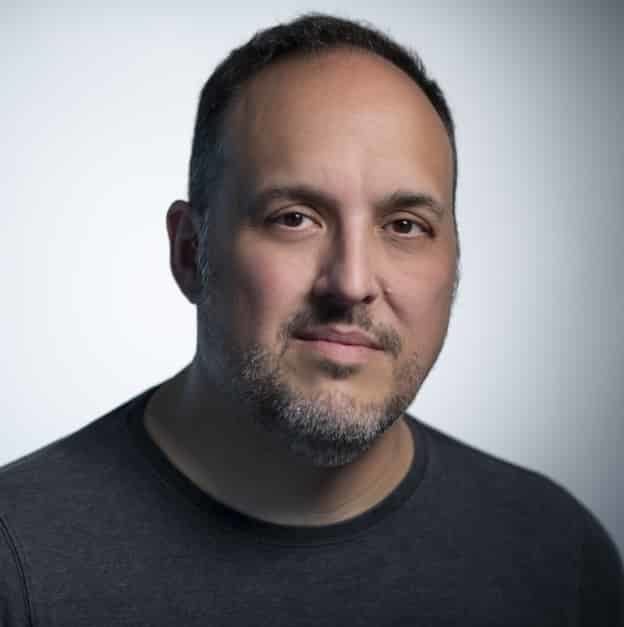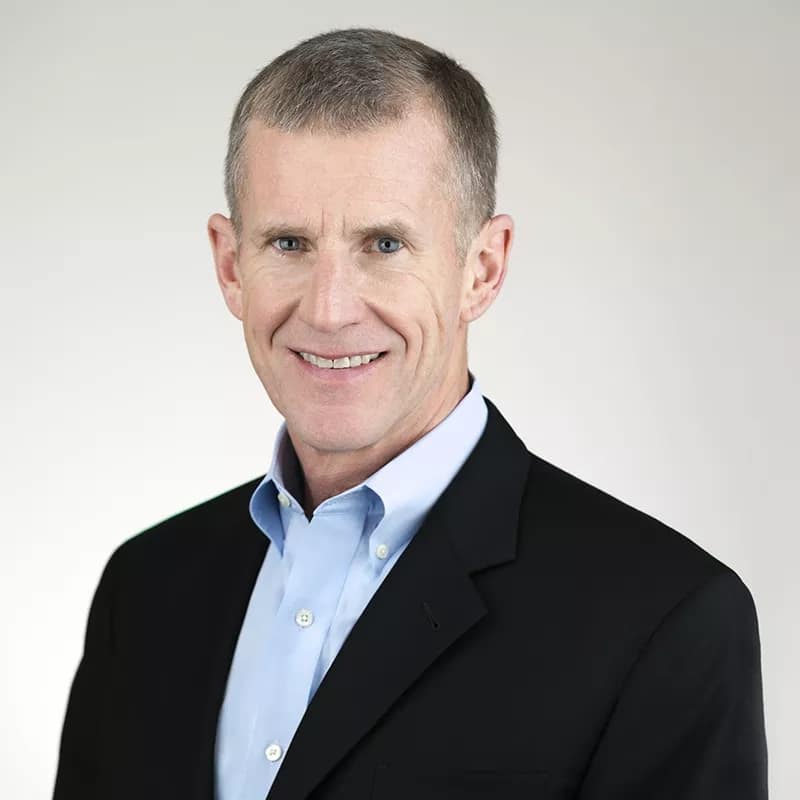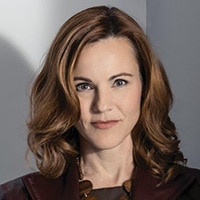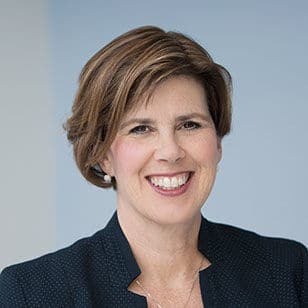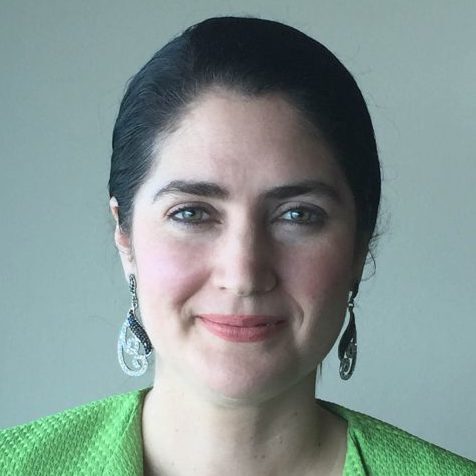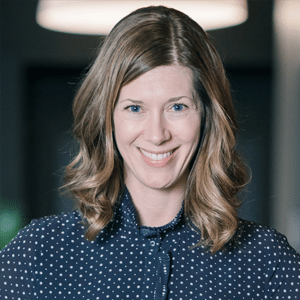The Data on the Chief of Data
With Randy Bean, author of Fail Fast, Learn Faster: Lessons in Data-Driven Leadership in an Age of Disruption, Big Data, and AI
| Randy Bean Founder & CEO, NewVantage Partners The founder and CEO of NewVantage Partners, Randy Bean is a thought leader, contributor to Forbes, Harvard Business Review, and the MIT Sloan Management Review, and author of Fail Fast, Learn Faster: Lessons in Data-Driven Leadership in an Age of Disruption, Big Data, and AI. |
 |
Satyen Sangani Co-founder & CEO of Alation As the Co-founder and CEO of Alation, Satyen lives his passion of empowering a curious and rational world by fundamentally improving the way data consumers, creators, and stewards find, understand, and trust data. Industry insiders call him a visionary entrepreneur. Those who meet him call him warm and down-to-earth. His kids call him “Dad.” |

Randy Bean
Founder & CEO, NewVantage Partners
The founder and CEO of NewVantage Partners, Randy Bean is a thought leader, contributor to Forbes, Harvard Business Review, and the MIT Sloan Management Review, and author of Fail Fast, Learn Faster: Lessons in Data-Driven Leadership in an Age of Disruption, Big Data, and AI.

Satyen Sangani
Co-founder & CEO of Alation
As the Co-founder and CEO of Alation, Satyen lives his passion of empowering a curious and rational world by fundamentally improving the way data consumers, creators, and stewards find, understand, and trust data. Industry insiders call him a visionary entrepreneur. Those who meet him call him warm and down-to-earth. His kids call him “Dad.”

Randy Bean
Founder & CEO, NewVantage Partners
The founder and CEO of NewVantage Partners, Randy Bean is a thought leader, contributor to Forbes, Harvard Business Review, and the MIT Sloan Management Review, and author of Fail Fast, Learn Faster: Lessons in Data-Driven Leadership in an Age of Disruption, Big Data, and AI.
 Satyen Sangani
Satyen Sangani
Co-founder & CEO of Alation
As the Co-founder and CEO of Alation, Satyen lives his passion of empowering a curious and rational world by fundamentally improving the way data consumers, creators, and stewards find, understand, and trust data. Industry insiders call him a visionary entrepreneur. Those who meet him call him warm and down-to-earth. His kids call him “Dad.”
Satyen Sangani: (00:02) A little knowledge is a dangerous thing. The Dunning–Kruger effect describes this psychological phenomenon. It states that people with limited knowledge in an intellectual domain tend to overestimate what they know. Often, people with a casual understanding of a problem oversimplify to get to a solution.
We’ve seen this pattern up close with data. At Alation we run a State of Data Culture Report, and with the first version of this report, we uncovered an interesting finding: The people most likely to self-report as having a top-tier data culture often engage in practices that suggest their data culture could, well, use some work.
You don’t know what you don’t know, but that overconfidence — if you keep learning — eventually it’ll self-correct. Case in point: In two years, we saw a dramatic dip in the people claiming to have a top-tier data culture from 35 to 15 percent. I see this as a great sign of a maturing market. I think it means that people are learning more about what it takes to be data-driven and realizing that they have so much more work to do.
So what is the data on being data-driven? What do the numbers tell us about the state of data culture, the state of data literacy, data governance, and data discovery within an organization? Where are leaders focusing their time and energy to build a data culture and what can they learn from other data-driven leaders? We’re digging into all this and more with our guest today: Randy Bean.
Randy is the founder and CEO of NewVantage Partners. He’s also the author of Fail Fast, Learn Faster: Lessons in Data-Driven Leadership in an Age of Disruption, Big Data, and AI. Randy is also a regular contributor to Forbes, Harvard Business Review, and the MIT Sloan Management Review. During our conversation, we’ll be discussing NewVantage’s research from the 2022 edition of their annual Data and AI Leadership Survey. It’s full of fascinating findings about what it means to be a CDO today.
Producer Read: (02:08) Welcome to Data Radicals, a show about the people who use data to see things that nobody else can. This episode features an interview with Randy Bean, founder and CEO of NewVantage Partners. In this episode, he and Satyen discussed the adoption of the chief data officer role, the challenges of creating a data culture and the importance of soft skills for CDOs. This podcast is brought to you by Alation. Alation enables people to find, understand, trust, and use data with confidence. Our data governance solution delivers trusted certified data fast. As one customer said: Alation is like a Google search for your data. It helps identify what data we have and more importantly, how to properly make use of that data. Learn more about Alation at Alation.com. That’s A-L-A-T-I-O-N.com.
Data Culture: Data as an Asset
Satyen Sangani: (02:57) I’d love to start by just asking you how you came to this work. How did you come to think about data culture? Why is this a topic of interest to you, and how did your career get you to a point where you were perhaps the foremost writer on the topic?
Randy Bean: (03:10) What’s less of a surprise is that I write. What’s more of a surprise is that I actually do things related to data because when I was an undergraduate, I studied literature and history and I had a passion for writing. But when I went to become employed, the jobs were really in technology. And specifically I was hired and trained to be a COBOL and assembly programmer. This was with one of the major banks in the U.S., but what I became interested in was not so much the commands and moving stuff around, but it was the stuff that I was moving around, which was the data. And one of the first questions I had was, I was assigned responsibility for something called deposit accounting history, where they captured all transactions and all interactions with customers over a six-year period of time.
Randy Bean: (03:57) And I said, “Wow, you have this information. What do you do with it?” And they kind of growled and they said, “Well, the regulators make us hold onto it for six years and then we can destroy it.” And I was just astonished. And from that point in time, I’ve really had a passion and interest for how organizations can take the data that they have, and they can leverage it to derive business value. So for me, it’s always about regardless of what investments that you’re making in data, are you delivering business value in terms of outcomes?
Satyen Sangani: (04:26) You mentioned that early anecdote, which I think a lot of people could relate to in the sense that, especially if you’re in a regulated industry, there’s all this stuff and you don’t use it, but these trends and these patterns, I think they haven’t been very clear to people for certainly most of the time that you’ve been doing this work. What caused you to write about it and to evangelize it and to think about it more globally?
Randy Bean: (04:48) The thing that over the course of the years that I’ve become interested in and focused on is change and transformation and how organizations change or don’t change. And over the course of my career, I’ve seen some things change, but some things remain the same. You know, when I started my career, people were saying, “How can we take the data that we have to be smarter, wiser, make better decisions?” And they’re fundamentally still asking those questions today. And data has proliferated significantly and computing power has increased. So what it’s suggested to me is that the obstacles to becoming a data-driven organization have less to do with technology precisely and much more to do with cultural change. And because data is an asset that flows across the organization, particularly for legacy companies, they’re not set up to manage data as an asset and think about data as an asset.
Randy Bean: (05:43) So it’s a destination — or I should say it’s a journey, it’s not a destination. What I mean by that is that you never get to a place where you can just kick back and say you’re data-driven. Rather, things change, data continues to proliferate, computing power increases, business problems and opportunities change. So it’s an ongoing quest for organizations and they need to be committed to stick with it for the long haul.
Data Journey: Is It Continuous or a One-Time Project?
Satyen Sangani: (06:13) Do you feel like people acknowledge or are acknowledging more of this continuous journey, endless journey aspect of being on the data journey? Or do you still feel like there’s a crowd out there that considers it to be a one-time project?
Randy Bean: (06:31) More so, but literally, I’ve walked into organizations six or seven years ago where I’ve met with a line-of-business president and they’ve said, “Can you help us become data-driven and get this done within the next 90 days?” So when I hear questions like that, that’s kind of disheartening, to say the least. And we do a survey each year of leading Fortune 1000 companies in the highest data-level executive. These days it’s a lot of chief data officers and chief analytics officers — roughly two-thirds of the respondents — but it also includes some CEOs, COOs, chief digital officers, but we ask five key questions. And those are as follows: Is your organization driving business innovation with data? 56.5 percent say yes, roughly 45 percent say no. Are you competing on data and analytics? 47.4 percent say yes. Over 50 percent say no.
Randy Bean: (07:28) Are you managing data as a business asset? 39.7 percent say yes, roughly 60 percent say no. Have you created a data-driven organization? Only 26.5 percent say yes. And roughly three quarters say no. And have you established a data culture? Only 19.3 percent say yes. And over 80 percent say no. So that both points to a challenge that organizations face, and it also points to a tremendous opportunity, both for the profession and for organizations and for people in the profession to work to achieve positive outcomes in the years ahead.
The Dunning–Kruger Effect
Satyen Sangani: (08:05) We run a survey here at Alation as well. And we’ve done that called the State of Data Culture report. And it’s funny because a lot of the findings that we have in our work is really similar to the work that you have in yours. And one of the interesting findings that we’ve had is that there’s this kind of Dunning–Kruger effect, which is this fancy way of talking about people’s ability to overestimate their own capability intellectually. So people are inclined to overestimate their own capabilities with data. Apparently, the people who say they’re the best with data, often exhibit many of the characteristics or many of the things that perhaps don’t make them great at data. Do you find any of that in your research? I thought that was the biggest irony in finding in the research that we’ve done over time.
Randy Bean: (08:49) Totally true. People ask me what are the characteristics that I see of data-driven organizations and I point to organizations like, for example, Capital One. In every conversation that I ever have with Capital One, they say, “What are others doing? What’s coming along? What should we be doing that we’re not.” In other words, their relentless drive to be data-driven means that they never rest. They’re never comfortable. They’re always looking for better ways. They’re always looking to see what others are doing because they know that unless they continue to do things to stay data-driven, that they won’t be the most data-driven going forward. And when I go into organizations and they sit back with our arms folded and they say, yeah, we have it all figured out, those are the organizations that I truly worry about.
Satyen Sangani: (09:36) You know, one part of being a data-driven organization or at least one investment that we look for is the investment of having a CDO in the organization, a chief data officer. And you read a survey that said that in the last, I guess it’s been 10 years, the number of CDOs have increased in the organizations that you’re surveying from 12 percent to almost 70 percent. How do you see that number changing behavior? That must be a pretty positive signal from your perspective, how do you see that changing in the role over that time period?
Randy Bean: (10:05) Yeah. And this is the topic I could talk on all day, frankly, but I’ll spare you from that. So to be precise, when we started the survey in 2012, only 12 percent of the Fortune 1000 firms that we surveyed indicated that they had a chief data officer. And this year, in 2022, for the report that we released in January, 73.7 percent said yes. That’s the good news. But at the same time, we asked about the success of the chief data officer role. And two years ago, we asked whether the role was successful and established and only 27.9 percent said yes. And 70-odd percent said no, it hasn’t been. That’s improved in 2022 to up by 40 percent that now say it’s successful and established, but 60 percent say the role’s still not successful and established. And there’s a variety of reasons for that. First of all is that the initial chief data officers, particularly in financial services, who invest heavily in data and analytics, started to be appointed after the financial services crisis of 2008, 2009, and their roles were largely regulatory and compliance oriented.
Randy Bean: (11:18) So in a way, the C-suite executive team could check the box and say, “We now have a chief data officer,” and operate under the assumption that all things would be solved. Well, the chief data officers are largely a new role over the course of the past decade, in the same way that a generation ago, that chief information officer was a new role and people joked at the time that CIO stood for “career is over.” So there’s that same level of instability and lack of expectations. You know, over the course of the past decade, we’ve seen a variety of manifestations in terms of where the chief data officer reports. It has ranged from the CIO as a frequent spot, but also in some cases to the chief financial officer, chief digital officer, and even the chief marketing officer. We’ve seen greater consistency in recent years, and we’ve seen more and more chief data offices move out from under the CIO and become more closely aligned with the business.
Randy Bean: (12:18) We’ve also seen the analytics function, sometimes characterized as the chief analytics, merged into a creative chief data and analytics officer function. But organizations continue to transition pretty heavily through the role with some of the major banks; they’re on their fifth, sixth, and even seventh person on the chief data officer role. So the point in all of that is that it’s a new role, there’s not a clear blueprint. It’s not one-size-fits-all for all organizations, a lot depends upon the culture of the organization, the nature of their business. So it’s very much a work in progress, but Rome wasn’t built in a day.
Satyen Sangani: (12:56) I think you can look at this research where you say, look, there’s only 40 percent that are feeling like the role is solidified. And that sounds initially quite negative. But I think if you maybe pull back, it also strikes me that one of the reasons why a lot of chief data officers are so short-lived in their role, it’s not just because the role is difficult, but because other people are hiring them away for bigger and bigger salaries, because everybody’s looking for the experienced data officer, and yet the role’s been around for 10 years. So the amount of experience is pretty finite.
Randy Bean: (13:28) You hit the nail on the head. So this past summer I co-authored an article in Harvard Business Review with Tom Davenport and an executive recruiter from Ridgeway Partners. And we pointed out that the average tenure in the industry was roughly two and a half years. But as you said, if you’re a chief data officer and you’re running into challenges in terms of developing the level of business sponsorship that you need and running into those type of headwinds and you’re getting calls from three other organizations saying that we have roles for you here if you’re interested, it can be very tempting. And plus the compensation now for chief data officers from my perspective is extraordinary.
Randy Bean: (14:10) And it’s certainly far greater compensation than many of these data and analytics leaders have ever seen in their life. But also it creates significant expectations as well. So when organizations are paying that highly for talent, they sometimes expect results to be achieved very quickly. And they sometimes don’t have the patience and understanding that sometimes the benefits of investing in data manifest themselves over time and can’t necessarily always be measured from quarter to quarter.
What Is the Pay for a CDO in a Global 2000 Company?
Satyen Sangani: (14:42) If I’m a chief data officer in a global 2000 company, what should I expect to get paid? What are the ranges of compensation for these folks?
Randy Bean: (14:52) Oh, the packages go into the seven figures these days and in some, they go into the multiple seven figures. So it’s pretty significant compensation packages.
Satyen Sangani: (15:08) Yeah. And phenomenal for folks to build a career path around and to think about the impact they can have in such a large role. So one of the things that struck me because we founded Alation in 2012, right about the time where you’re tracking this initial data at your study and over that time period, one of the things that I’d seen is that initially chief data officers, while they were the theoretical role, were too busy focusing on what you described as compliance efforts, defensive efforts, and a lot of your research now tracks that they’re moving towards more offensive efforts. Do you see that trend accelerating, talk a little bit about that. Is that industry dependent?
Randy Bean: (15:47) Yeah. I’d make two points there. So we see a definite shift from defense to offense. We see a huge aspiration. Sometimes the aspiration is greater than the reality because people generally speaking would rather be doing activities that help grow an organization and grow new markets and grow revenue as opposed to putting their fingers in the holes in the dike so to speak. So one of the things I’ve noticed over the years is that many of the chief data officers are very eager to talk about their offensive activities and less eager to talk about their defensive activities. But regardless of that, there has been a significant shift. And evidence of that shift really is in the integration of the analytics function into the responsibilities of the chief data officers, because typically, the analytics activities tend to be focused more on offensive as opposed to data management of compliance activities.
Randy Bean: (16:42) The other side of the — not the other side of the equation, but another way of looking at it is sometimes we describe it as the technology of data and the business of data and the technology of data might be everything associated with ingestion and creating a platform and creating an environment by which an organization can utilize and access data to deliver business outcomes. But the business of data can be very much focused on: What are the critical business questions? What are the use cases? What are the data that’s needed/required to answer those questions? And how does that tie back to the data that’s being culled and organized and made available?
Satyen Sangani: (17:21) Which are two different skill sets because one is understanding technology and the other one is understanding people’s somewhat evolving and changing business requirements. And then with the defensive mindset, you’ve got this very procedural, almost legal approach, which tends to be very mechanistic. One quote that I thought was particularly telling from your research was from a chief data officer who said, “I feel I’m failing in my job because I’m expected to carry out cultural change as well as implement a series of important technical changes. I’m not experienced in change management, and find the cultural change to be very difficult to achieve.” And so you have these people who may have to the extent they even grew up as a CDO or in the CDO function really experienced at doing all of this procedural compliance work. And all of a sudden they’re applying for and being expected to drive cultural change. What are the skill sets and are there people who have been able to be successful at doing both?
Randy Bean: (18:18) Well, ultimately to have the maximum business impact, it’s a transformative role, which means it’s a change management role because you’re trying to move an organization from where it’s been in terms of its traditional data capabilities and into a more data-enabled type of environment.
So I speak to many CDOs on a regular basis, as well as aspiring CDOs or organizations looking for CDOs, and when they talk about extensive or deep experience and expertise around data management capabilities or developing algorithms, my message to them is that’s not what counts ultimately in terms of delivering the most value to organizations, it’s really the ability to effectively develop business sponsorship, define what the key business issues are to make sure that data is being made available to the business decision makers. And those are the things that seem to consistently correlate to the greatest business outcomes for an organization.
What Are the Signs a CDO Is Not Succeeding?
Satyen Sangani: (19:23) Of course, then if you’re not able to drive the transformation, there’s the failure pattern of people being short in the roles and not succeeding, and for better or for worse, I’ve seen that pattern as well. What are the signs if you’re a CDO that you’re on your way out? How do you know when you are not succeeding? And what are the tell-tales that you can look for to tell yourself, “This might not be what I’m hoping it was going to be”?
Randy Bean: (19:51) What I see is that many chief data officers — in part because they’re new in the role or they’re new with the organization — they tend to overpromise or set expectations for things that are difficult to deliver, and they don’t have those tough arguments up front. Many of them are new to the C-suite, so they don’t realize how tough things can be when things don’t go well. And also, many of their responsibilities have been carved out of the responsibilities of other executives, be it the CIO or perhaps the chief digital officer. So those executives are all on board and fully willing to support things as long as results were achieved. And when they don’t see those results and they don’t see them in a timely fashion, they lose patience and they feel that maybe they could have done better. So a level of resentment starts to build.
Randy Bean: (20:48) So it’s a pattern that I see often. Those CDOs that are most successful quickly establish trust within business with business sponsors, they work with the business sponsors, each of the individual business sponsors to identify what are the one or two or three most important things to them — or one, two, or three most important business questions — and see if they can solve those questions, even if it’s with a very small subset of data, to begin to develop that relationship, that trust. When they repeat that trust, it starts to establish, further deepens credibility, and it’s established momentum. But if that momentum isn’t established and people are waiting to see, and it’s one of these “building something, but without any type of foreseeable return,” then the tide can change pretty quickly.
Satyen Sangani: (21:42) I think the point that you mentioned that bears just a ton of repeating is this idea of fighting the hard battle up front and the focus on being popular. Because I do think a lot of these new folks know a lot about data and technology, but may not necessarily know how to negotiate for resources and clearly define projects and prioritize and take quick wins. And so these are all executive skills, but the idea that you’re, in the very early days, going to do something small and deliver on it. That’s been a consistent theme of the podcast that we’ve heard from other chief data officers who’ve been successful in the role.
Randy Bean: (22:18) I’d add some other things along that line too. And that is that data can have its own lingo: data meshes and data fabrics and data lakes, and so forth and so on. And you know, this can sound daunting or sometimes it can even sound mysterious or even as excuses to the line of business executives. I tell the story sometimes of a data leader that went to the president of the company and said, “I need $25 million to invest in MDM.” And the business leader turned to them and said, “The answer is no. When you can come back to me and explain what the business value is. I don’t know what MDM is. None of the other executives here understand what MDM is, and when you can come back to us and articulate it in the form of ‘this will help us grow our customer base, increase our customer profitability, help us enter new markets.’ Then we can talk about a $25 million investment.”
What’s the Principal Challenge in Becoming Data-Driven?
Satyen Sangani: (23:17) Yeah. And most people, I think in IT, think that MDM is mobile device management. So I mean, you even have that. Right? I mean, it’s like acronyms on acronyms for things that people don’t necessarily care about. But ultimately, you’re going to try to change culture and changing culture is a lot about teaching people to be literate and how do they think. You identified a list of things that are barriers to building a data culture. I would love for you to talk about that because I think it decomposes this very amorphous idea into something pretty tangible. Can you tell us about what those barriers are and how people should think about them?
Randy Bean: (23:54) We’ve been asking the same question for many years. What’s the principal challenge in becoming data-driven? In 2018, 80 percent of the respondents said it was cultural factors and only 20 percent said technology. By this year, it was up to 92 percent who said cultural factors and only 8 percent said technology. So change is something that many people don’t like, and it’s easy for organizations to pay lip service at the top of the organization, but until it fully manifests itself with the mainstream of the organization, it doesn’t really take hold in a tangible fashion. We’ve seen organizations do various things to help build greater culture data within their organizations. And some of these things worked at varying degrees.
Randy Bean: (24:45) One organization we saw created a series of cartoons, which I thought was creative. So they showed people producing data and people in all roles within the organization who touched data. So it could make it real intangible to people within the organization and how data was then later applied to serve customers in a satisfactory fashion. So by having people identify with these cartoon characters that made it a little bit more friendly, I can’t say one way or another whether it’s really successfully transformed the organization, but it was a novel idea. And I thought it was very clever.
Satyen Sangani: (25:26) It seems like so much of what goes into creating a data culture has everything to do with the CEO and perhaps less to do with the CEO, or a CEO’s really a functionary within the role. Do you see that as being true? Are there examples where maybe the CEO is either — maybe if they’re not bought in completely or not sponsored or completely — maybe just neither here nor there about the thing, but it can succeed or does this have to start from the top down?
Randy Bean: (25:52) Well, I have the benefit or misfortune of having worked in Silicon Valley three years during the internet boom from like 1998 through 2001. And at that point in time, be it the venture capitalists or people in industry were saying like, “Wow, it was going to radically transform everything and it’s going to do that overnight. And if you’re not online and digital you’re going to die out within two years.”
So the interesting thing, at least from my perspective, was that the internet and the digital transformation actually fully fulfilled its mission, but it really took the better part of a decade or two decades for that to happen. In other words, people don’t necessarily adopt new technologies and new approaches and new ways of doing things overnight. People have to get comfortable with them and it has to become established. So I think there is a growing comfort and understanding within organizations of the importance of data, it’s even manifest itself in even recently, or in the past few years, I’ve heard within an organization saying, “Oh, not another data project!”
Randy Bean: (27:03) And I say you should never think in those terms. Data is something that’s a primary asset of the organization. It’s not a project. It’s not a little thing within some part of the organization, it should be one of the things that’s most central, just like you think of the finances of an organization. So it’s that shift in thinking to think that data is something that matters to all of us, as opposed to data is something that’s relegated to some group that we all only call upon when we need them.
Satyen Sangani: (27:36)Yeah. So that idea that it matters to everybody has to be a drive that comes in multiple levels of the organization then ultimately.
Randy Bean: (27:45) Yeah. And it’s a bit of a generational change. And when, I mean, generational, I mean, something that takes place over time, but it’s been pointed out to me recently that generations in terms of database platforms come in five-year increments. You know, when I first started NewVantage Partners, we were helping companies move from whatever it was, data warehousing environments to Netezza-type of environments, and then five or so years later was moving from Netezza to Hadoop, and now everybody’s rushing off of Hadoop to get into various types of cloud platforms or various data lake, decentralized, recentralized configurations.
Where Will the CDO Role Be in the Next Five Years?
Satyen Sangani: (26:18) You’ve seen the data, you’ve seen the trends. Where will the chief data officer role be in the next five years? How do you think data culture will be thought of as an exercise? Will it go away as a trend? How do you think about what trends you’ll see in the next five years? And what does your research lead you to believe that time period, the next half decade looks like?
Randy Bean: (28:50)Yeah, well, I’d say two things. First of all, I think “data radicals” is the absolutely appropriate name for these discussions, or maybe even data anarchists, because you have to be willing to break traditional patterns. I think the tremendous news in the findings that have been published is that there’s a huge opportunity in the data profession. I think it’s an opportunity that will persist over the next generation. There’s so much work to be done. We’re really still in many respects, from a long-term perspective, in a nascent stage in terms of how organizations can effectively use data, how they can manage themselves to use data, and how people can develop the skills and capabilities to be effective as data leaders. And as we’ve talked about, I think much of that has to do with really the cultural and change management issues and breaking down the barriers between data jargon and business jargon.
Randy Bean: (29:51) I know people have said to me, “Well, the business people just don’t understand what we’re talking about,” but the reality is the business people are the ones that are bringing in the revenue of the organization. I mentioned I started my career as a COBOL and assembly programmer, and I couldn’t just continue to speak the technical jargon. I realized that I had to learn to speak the language of the business executives. And that’s why in all the writing I try to do, I always have in mind a CEO of a Fortune 1000 company, and whether they would understand what I’m saying. And I sometimes kid that, therefore I write at a third grade level, but I don’t mean that in a bad sense. I mean that if you can’t explain something to someone, then it’s going to be very hard to achieve the outcome that you are seeking to achieve. And sometimes people say to me, “What do you think about data meshes and data fabrics?” And I’m like, “I don’t know what you mean.”
Satyen Sangani: (30:45) I try not to.
Randy Bean: (30:46) Yeah. They say “data meshes and data fabrics.” And I’m like, “Yeah, I’m still not getting it. Could you maybe explain what it is you mean to me when you use those terms?” And sometimes it’s very hard for them to explain. So it’s a good test of people. If they’re going to articulate business value, they should be able to describe the terminology in ways that translate to business value.
Break Traditional Patterns
Satyen Sangani: (31:11) Data anarchists? Data radicals? I think those are different things, but we’ll need to cover that off in a future pod. So today, no matter what we call ourselves, Randy’s reminder that it’s on us to break traditional patterns is one that really resonated with me. We’re always going to face future resistance to change. And we’re always going to run into a few people who exemplified the Dunning–Kruger effect a little bit too well. People who think that driving data culture is quick and simple work, but if you’ve made it this far in this podcast, you know how hard the work is and also how valuable it is. So stay the course, keep learning, and keep sharing. This is Satyen Sangani, CEO and co-founder of Alation. Thank you for listening.
Producer Read: (31:56) This podcast is brought to you by Alation. Is your organization ready for its next compliance audit? Data governance can help you pass that audit, while also supporting innovation, accelerating analytics, and mitigating risk. Read this evaluation of 12 data governance solutions at alation.com/dgq3.
Subscribe to the Data Radicals
Get the latest episodes delivered right to your inbox.




